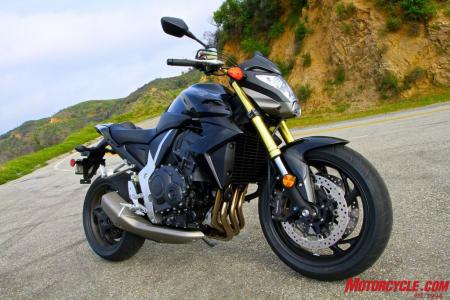Yamaha’s potent yet manageable FZ8 is enough to make its paternal grandfather, the R1, blush with pride. As the latest beneficiary from Yamaha’s repli-racer genetic stock, the 779cc inline-Four is endowed with some of Yamaha’s most inspired sporting technology which should serve it well in its life as an everyday sporting Standard.
The FZ8’s DNA has roots in Yamaha’s premier sportbike, the YZF-R1. The current FZ1’s engine was derived from the pre-crossplane R1. The new offspring inherits the FZ1’s R1-inspired alloy perimeter frame, its chassis geometry, some engine components, as well as many design elements from its compact and efficient engine.
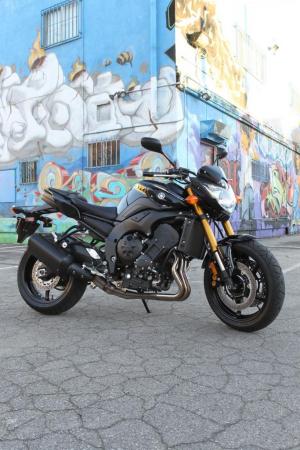 The FZ8 shares much in common with the FZ1. |
Since we’ve already covered most of the FZ8’s tech details in our preview article, we’ll focus on why Yamaha thinks this bike is a good idea now, and what it’s like to ride.
Why it’s Here 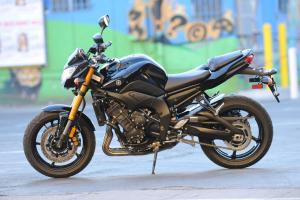
It already looks right at home.
Yamaha says after extensive market research, it decided to import the previously Euro-only FZ8 to the U.S. and Canada for 2011 to span the chasm between 600cc and 1000cc street-oriented sportbikes – while for now bringing its half-faired Fazer 8 sibling only to the Canadians and Euros.
Since 2005, “sportbikes,” including hypersports, sporty bikes, and sport-tourers, have comprised about 20% of all U.S. motorcycle sales, Yamaha says, second only to cruisers, which account for more than 40%.
In mining demographic data in these recessionary times, Yamaha sees a glint of gold in a trend toward buyers who want one do-it-all sportbike. Some of these buyers will be replacing existing bikes, or trading up from smaller bikes, while at the same time there’s a 9% decline in those seeking an additional bike to add to a stable.
Among 53 buyer preferences Yamaha researched, high on the list were rider positioning, attainable price, large-enough displacement, color and graphics, physical size, ease of touching feet to the ground, light and maneuverable handling, fuel economy, and more.
In short, the mission was to create a versatile and economical bike that comes closer than ever to letting riders with sporting inclinations have their cake and eat it too.
After sampling an FZ8 for nearly 130 miles, in conditions varying from highways to canyons to around town, we would say that this new machine could certainly fit the bill.
How it Works Depending on whether you’re feeling like a glass-half-full or half-empty kind of person, you could either say the FZ8 feels like a 600 – but with power like a strong 750 – or you could say it’s like a detuned, lighter FZ1.
But while the FZ8’s 12.0:1 compression, fuel-injected engine shares the FZ1’s crankcase, 53.6mm stroke and basic architecture, it is not accurate to call it a sleeved-down version of the 11.5:1 compression FZ1 mill.
To begin with, the FZ8’s four-valve-per cylinder head is all new, as are its shorter lift and duration camshafts, and new intake funnels – 125mm-long for cylinders 1 and 4, and 150mm-long for cylinders 2 and 3 – that help broaden its powerband.
Coupled with its 35mm throttle body – 10mm narrower than the FZ1’s – these features enhance torque while still allowing for a respectable top-end rush.
Yamaha doesn’t make power claims, but the FZ8’s 11,500-max-rpm mill reportedly peaks at around 105 hp, and 61 ft-lb torque when measured at the crankshaft.
Speaking of which, the crankshaft is modeled on the FZ1’s but weighs 30% less, which Yamaha says helps it still rev quickly, while positively influencing handling.
How? Although the FZ8’s 467-lb curb weight is only 20 lbs lighter than its big brother, Yamaha says decreased crankshaft inertial mass can be discerned in the way the bike transitions from side to side. Coupled with a 10mm-narrower rear tire, Yamaha says the FZ8 feels 50 lbs lighter. We didn’t have an FZ1 to compare it to, but it’s at least sure the FZ8 exhibits a nimbleness that belies its mass.
Straddling one is also meant to be as unintimidating as possible. Coupled with an identical 32.1-inch seat height, Yamaha says it narrowed the rear of the 4.5 gallon fuel tank and the front of the rider’s saddle just to help shorter riders reach the ground.
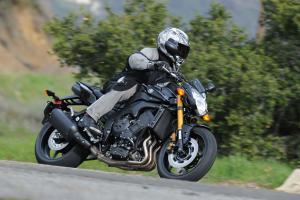
Comfortable, confidence-inspiring, and sufficiently powerful.
The FZ8’s riding position is slightly more aggressive than the FZ1’s, yet still relatively neutral and functional. Handlebars are 5mm forward, while the footpegs are 15mm more rear set and 10mm lower.
And while Yamaha took pains to meet those of lesser stature, surprisingly enough, a 6-foot, 5-inch motojourno who was along for our ride reported he had no discomfort either.
Also displaying no unwanted issues is its operability. Start-up is instant, whereupon it settles into a steady idle around 1100 rpm indicated on the analog tachometer, which resides next to the digital display for speed, fuel, temperature, and trip data. (At night, backlighting is red.)
Twisting the throttle yields immediate response; the engine revs smoothly and its power characteristics would make it reluctant to stall even under a newbie's wrist. Ample torque fed through a clutch – with one less fiber and metal plate than the FZ1 – coupled with a light clutch-lever engagement make it a snap to get rolling.
The FZ8’s 17-inch Bridgestone Battlax BT021 sport-touring tires – 120/70 in front, and 180/55 out back – were developed specifically for it, and contribute to predictable characteristics.
They span between a 57.5-inch wheelbase sporting a 51/49, front/rear weight bias. The package is held up by a non-adjustable 43mm KYB fork, and preload-adjustable shock, each offering 130mm of travel.
Whether trolling down the highway, or bending through canyon S-curves in mile after undulating mile, the setup works.
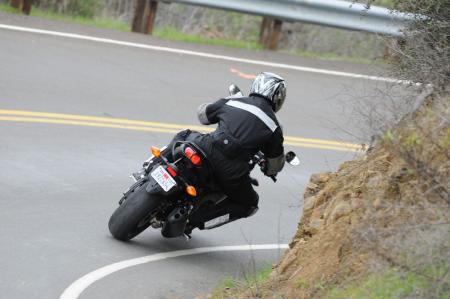 Thanks to Aerostich for its GORE-TEX® Roadcrafter one-piece suit – the perfect outfit for a cool and slightly rainy day. |
Riders on our trip ranged from about 150 lbs to over 250. And while no one griped inordinately about the suspension, it is noteworthy that the FZ1’s suspension comes with full adjustability. We think this would have been nice on the FZ8 too – but for $2000 less, this is one of its engineered compromises. Riders wanting to fine-tune the FZ8 can still do it the old fashioned way, by changing fork springs or oil.
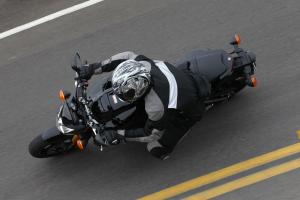
It’s easy to get used to this bike.
And really, as-delivered it’s not much of a problem. While the springs aren’t especially firm, handling only became somewhat less confidence inspiring under my 185 lbs plus gear when pitched over, charging hard traversing rough or patch-repaired pavement.
This ability to take what comes is mostly due to the FZ1 chassis. The over-built alloy perimeter frame, and huge, shapely alloy swingarm hold everything in line as the horizon tilts to peg-scraping angles, inspiring riders to keep dipping deeper and faster.
The chassis is welcome considering the FZ8 engine is a mean little runner and makes for an effective tool that you don’t have to spool up like an Indy car to make haste, the way you do with a 600cc supersport.
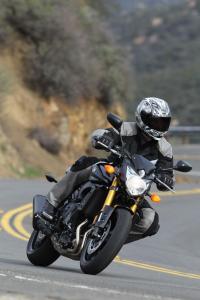
The extra torque over a 600-class bike is welcome.
While I admit a bit of unease about riding hard on OE sport-touring tires in cool weather – and if it were mine, I’d slap on some sticky sport tires just for the extra performance margin – the Bridgestones never slipped during spirited riding, even after running over medium-quality asphalt curves that had just been sprinkled by light rain.
And no matter what the corner or speed, gearing for the 6-speed transmission is well-matched to engine output. The FZ8’s gearbox differs only from the FZ1’s by a lower final-drive ratio and lower first gear – which nevertheless hits an indicated 74 mph when bouncing off the rev limiter.
Sprints to 100 mph and beyond are no big deal, though we did not try to see how high we could climb. Likewise, reversing thrust with the 310mm discs grasped by monoblock four-pot calipers up front, and 267mm rear disc is easy and predictable, regardless of the bike’s velocity.
The 4-into-2-into-1, catalyst-equipped, stainless-steel exhaust, with shorty muffler tastefully blacked out, emits a suitably powerful but muted note. This is especially true in the upper range, where – milder cams or not – the familiar snarl of a tight inline-Four coming on the pipe matches the resultant switch to warp drive.
Lacking the FZ1’s taller half fairing, the FZ8’s protection from the elements is limited, but wind-blocking gear negated the need for more coverage, at least this time. Yamaha does offer a $129.95 smoked polycarbonate fly screen (not tested), which could help if desired.
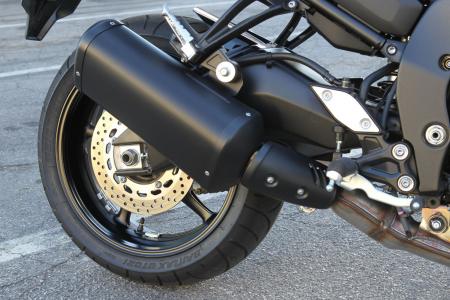 Of course it might sound cooler with an aftermarket exhaust, and make a few extra ponies. The stock system gives the stealth factor, however. You can scream it when you need to, without drawing unwanted attention. Note curvaceous, control-filled die-cast aluminum swingarm. The process lets Yamaha precisely tune its characteristics. |
ConclusionIf the race toward repli-racer superiority has done anything for the rest of motorcycling, it’s been to create a rich repository of technology ready to be re-tasked in bikes like Yamaha’s latest rendition of the Universal Japanese Motorcycle.
And as of yet, the $8490 FZ8 is essentially in a class by itself. It offers 80% the low and midrange torque that a literbike does – instead of something like 55-60% typical to a peaky 600 supersport. At the same time, it is about as agile as a 600, but its several-thousand-rpm lower operating range will be easier going on all those close-tolerance internal parts.
Of course, with limited suspension adjustability, and being somewhat heavier than uber-competitive 600 supersports, it is not really a direct opponent, but merely a competitive alternative for riders looking for a broadly talented performer.
In terms of displacement, the FZ8 best lines up with the 798cc parallel-Twin BMW F800R we recently tested. While we did not compare them back to back, the FZ8 feels more potent than the $9950 BMW. In terms of power, Triumph’s 675cc Street Triple is likely a close match, as is its $8899 MSRP
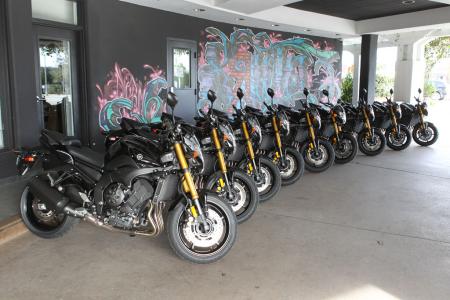 Yamaha had a fleet waiting for us at the lobby of a hotel in Venice, Calif. |
Under a steady hand, it should get 40 mpg or better – Yamaha says it’s seen 201 miles from a full tank – and should be slightly less to insure than the $10,490 FZ1. Its price is just $1000 more than the FZ6R while being a generation ahead in performance and technology – especially its frame and swingarm.
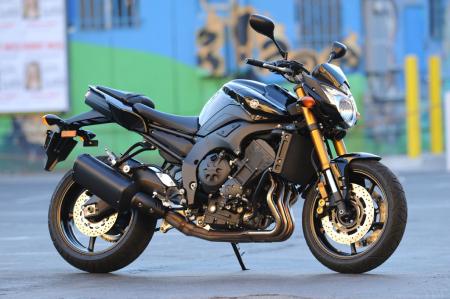 While there are bikes that arguably compete, in a real sense, the FZ8 stands alone. |
Other optional accessories for the FZ8 include a frame-mounted center stand ($189.95), protective frame sliders ($129.95), steel engine guards ($199.95), a passenger seat cowl cover ($229.95), bolt-on passenger grab bars ($119.95), a lower cowl ($219.95), radiator cover ($99.95), tank bag ($89.95), and more.
Unfortunately, that most useful of options – ABS – as offered in Europe, is not available in the U.S.
Offered in Raven (black) for this year only, Yamaha says it is shipping the FZ8 now, and has met with enthusiastic response from U.S. dealers who have pre-ordered an undisclosed quantity that nevertheless has Yamaha reps satisfied. They tell us the supposition is that this is a bike that should sell.
source:www.motorcycle.com


 Install a POWERSTOP Extreme Performance Brake Disc and Pad Kit and enjoy shorter stopping distances, increased pedal feel, quiet braking, reduced dust, and fade resistant braking to temperatures above 1400F.
Install a POWERSTOP Extreme Performance Brake Disc and Pad Kit and enjoy shorter stopping distances, increased pedal feel, quiet braking, reduced dust, and fade resistant braking to temperatures above 1400F.













 Getting car insurance is not very easy task and its require lot of research work for any normal person seeking a car insurance. First you need to realized what is your need, why you looking for car insurance and how much you can pay as car Insurance premium.
Getting car insurance is not very easy task and its require lot of research work for any normal person seeking a car insurance. First you need to realized what is your need, why you looking for car insurance and how much you can pay as car Insurance premium.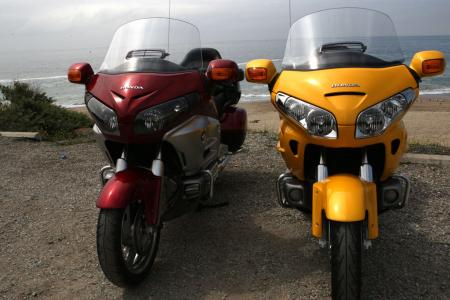 The 2012 Honda Gold Wing (left) sits next to the 2010 iteration, showing its new tires, revised side fairings and longer saddlebags.
The 2012 Honda Gold Wing (left) sits next to the 2010 iteration, showing its new tires, revised side fairings and longer saddlebags.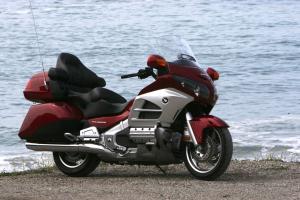 New silver side fairings are the most distinctive cue that you’re looking at the 2012 Gold Wing.
New silver side fairings are the most distinctive cue that you’re looking at the 2012 Gold Wing.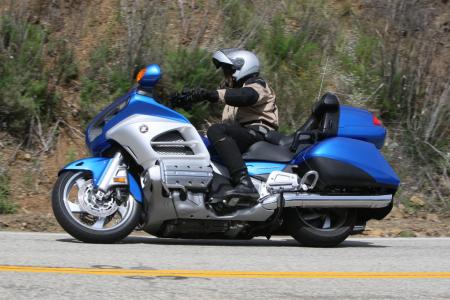 Through the decades, Gold Wings have always had great seats, and the one on the 2012 model could be its best yet.
Through the decades, Gold Wings have always had great seats, and the one on the 2012 model could be its best yet. 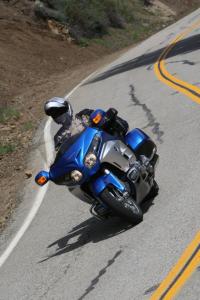 Honda engineers have made several suspension tweaks and fitted new tires to the 2012 Gold Wing. Turn-in response is slightly quicker than the venerable previous version, and cornering clearance remains excellent for such a big rig.
Honda engineers have made several suspension tweaks and fitted new tires to the 2012 Gold Wing. Turn-in response is slightly quicker than the venerable previous version, and cornering clearance remains excellent for such a big rig.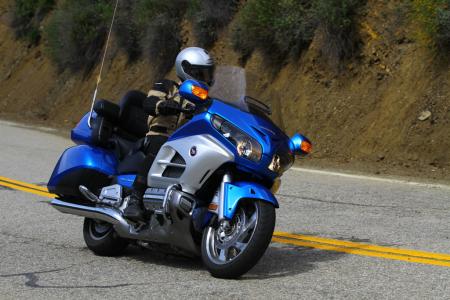 Upgrades to the 2012 Gold Wing include new iPod menu, surround sound, and a much more contemporary navigation system.
Upgrades to the 2012 Gold Wing include new iPod menu, surround sound, and a much more contemporary navigation system.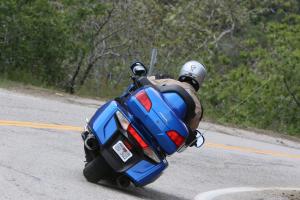 The Wing’s rear gets freshened up for 2012.
The Wing’s rear gets freshened up for 2012.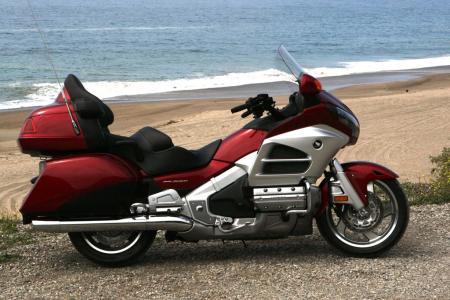 Our correspondent wasn’t a fan of the Wing’s new black engine cover.
Our correspondent wasn’t a fan of the Wing’s new black engine cover.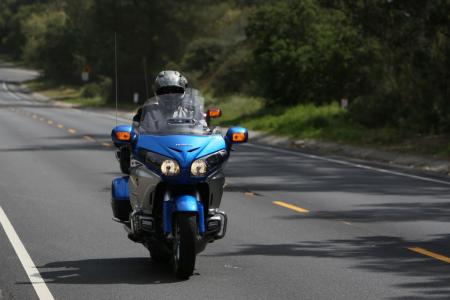
 The FZ8 shares much in common with the FZ1.
The FZ8 shares much in common with the FZ1. It already looks right at home.
It already looks right at home.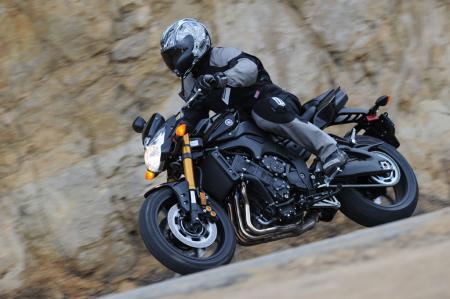
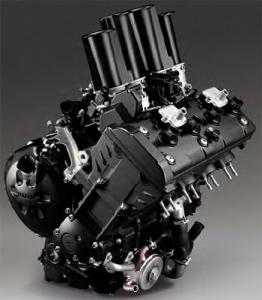
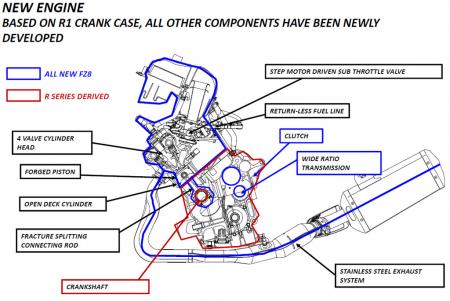
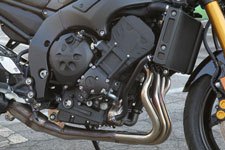
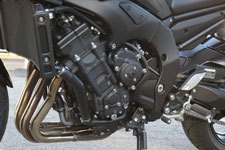
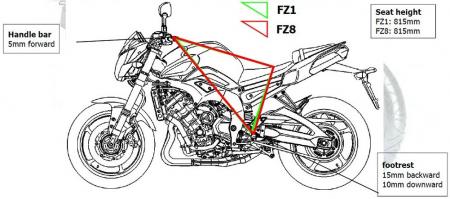
 Comfortable, confidence-inspiring, and sufficiently powerful.
Comfortable, confidence-inspiring, and sufficiently powerful.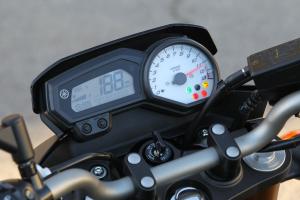
 Thanks to Aerostich for its GORE-TEX® Roadcrafter one-piece suit – the perfect outfit for a cool and slightly rainy day.
Thanks to Aerostich for its GORE-TEX® Roadcrafter one-piece suit – the perfect outfit for a cool and slightly rainy day. It’s easy to get used to this bike.
It’s easy to get used to this bike. The extra torque over a 600-class bike is welcome.
The extra torque over a 600-class bike is welcome. Of course it might sound cooler with an aftermarket exhaust, and make a few extra ponies. The stock system gives the stealth factor, however. You can scream it when you need to, without drawing unwanted attention. Note curvaceous, control-filled die-cast aluminum swingarm. The process lets Yamaha precisely tune its characteristics.
Of course it might sound cooler with an aftermarket exhaust, and make a few extra ponies. The stock system gives the stealth factor, however. You can scream it when you need to, without drawing unwanted attention. Note curvaceous, control-filled die-cast aluminum swingarm. The process lets Yamaha precisely tune its characteristics.  Yamaha had a fleet waiting for us at the lobby of a hotel in Venice, Calif.
Yamaha had a fleet waiting for us at the lobby of a hotel in Venice, Calif. While there are bikes that arguably compete, in a real sense, the FZ8 stands alone.
While there are bikes that arguably compete, in a real sense, the FZ8 stands alone.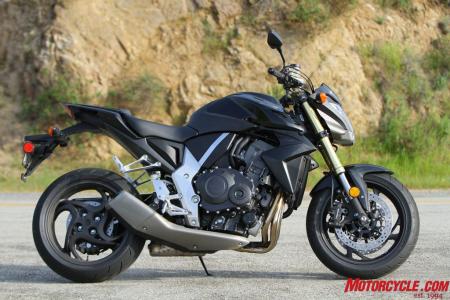 Every once in a blue moon we get a cool bike first seen in Europe on this side of the pond. In this case it’s the 2011 Honda CB1000R.
Every once in a blue moon we get a cool bike first seen in Europe on this side of the pond. In this case it’s the 2011 Honda CB1000R.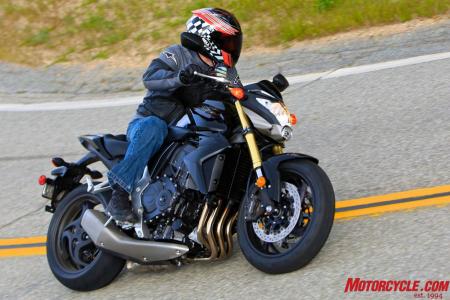 While it doesn’t make nearly as much power as the CBR1000RR it was sourced from, the “retuned” mill provides plenty of grunt for street riding.
While it doesn’t make nearly as much power as the CBR1000RR it was sourced from, the “retuned” mill provides plenty of grunt for street riding.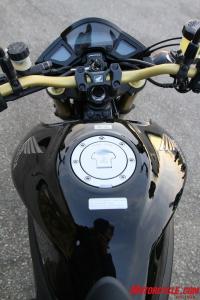 Pictures don’t do it justice, but when viewing the CB1000R in person from this angle, it really is svelte.
Pictures don’t do it justice, but when viewing the CB1000R in person from this angle, it really is svelte.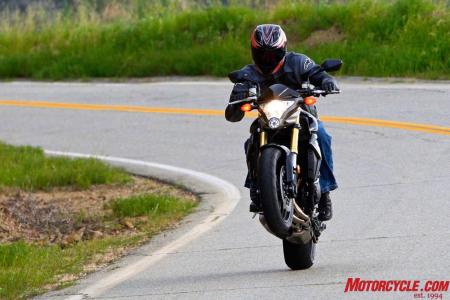 With plenty of torque on hand, simply sit back and twist the wrist and you’ll get results like this.
With plenty of torque on hand, simply sit back and twist the wrist and you’ll get results like this. 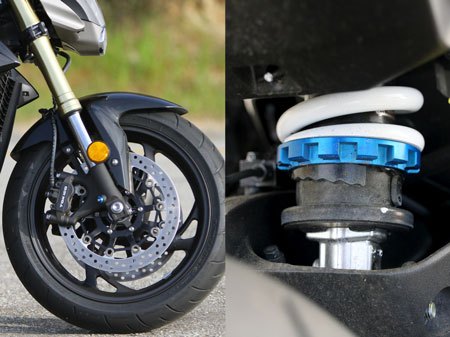 Suspension components are fully adjustable in front and lack only compression damping in the rear. Brakes on the CB are also competent for most situations, though our testers are split on their performance at the limit.
Suspension components are fully adjustable in front and lack only compression damping in the rear. Brakes on the CB are also competent for most situations, though our testers are split on their performance at the limit. 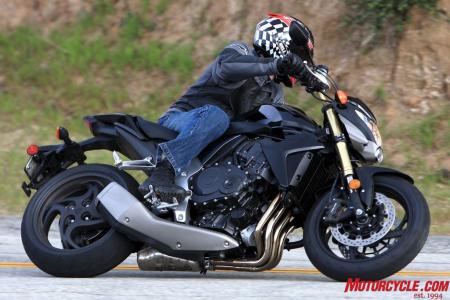 We’re impressed by the Honda’s supremely agile handling, which is at least partly due to the 180/55-17 rear tire. Note also the single-sided swingarm.
We’re impressed by the Honda’s supremely agile handling, which is at least partly due to the 180/55-17 rear tire. Note also the single-sided swingarm.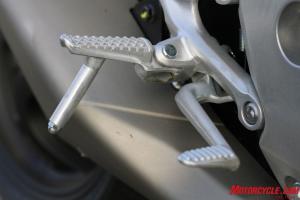 Get a little carried away with lean angle, and these comically long peg feelers will let you know.
Get a little carried away with lean angle, and these comically long peg feelers will let you know.